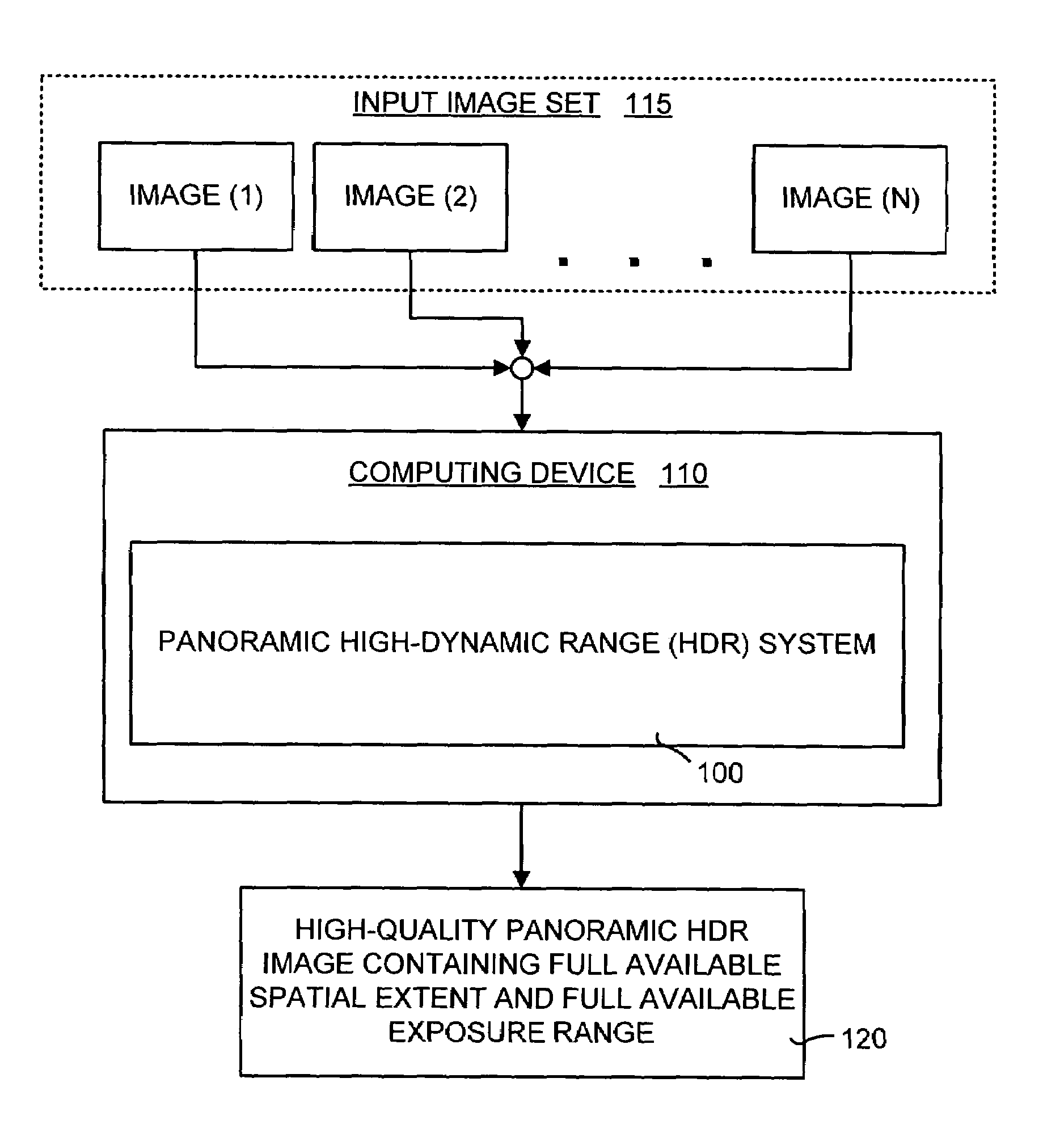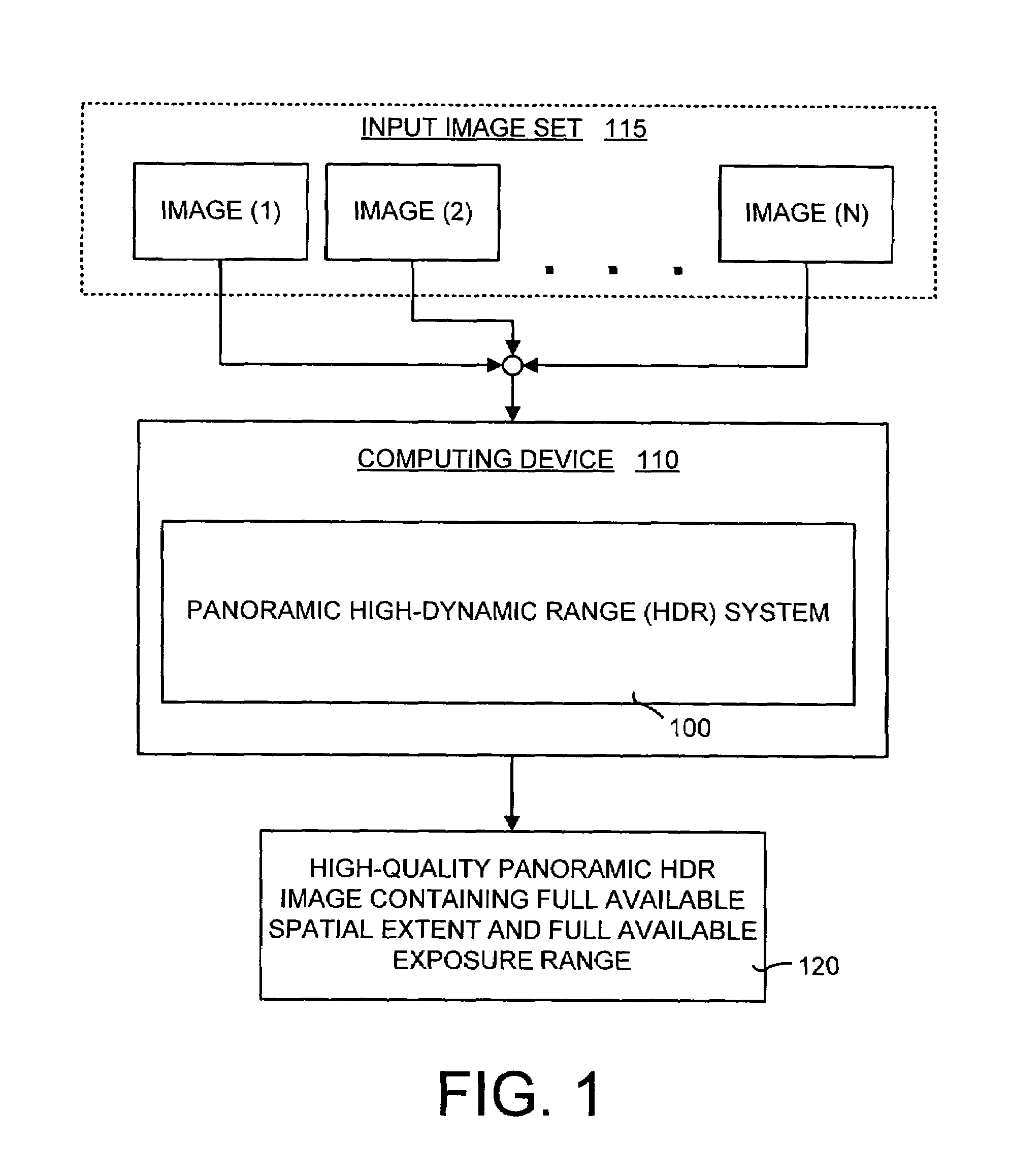Method and system for combining multiple exposure images having scene and camera motion
a technology of scene and camera motion, applied in the field of digital image data processing, can solve the problems of scene motion and parallax, and the inability to register sub-pixels, and achieve the effect of reducing data costs and seam costs
- Summary
- Abstract
- Description
- Claims
- Application Information
AI Technical Summary
Benefits of technology
Problems solved by technology
Method used
Image
Examples
working example
VII. Working Example
[0090]In order to more fully understand the panoramic high-dynamic range (HDR) system 100 and method disclosed herein, the operational details of an exemplary working example are presented. It should be noted that this working example is only one way in which the panoramic HDR system and method may be implemented.
[0091]In this working example, the panoramic HDR system and method took as input multiple images that captured a scene at varying orientations and exposures. A feature-based registration technique then was used to automatically align the input images. This registration technique is tolerant to exposure differences. Once the input images were geometrically-aligned, they were mapped to the same global radiance space. This mapping was achieved by using a pre-calibrated camera where the camera settings were extracted from exchangeable image file (EXIF) tags. Next, the unknown color gain for each color channel was determined. Once the radiance values for each...
PUM
 Login to View More
Login to View More Abstract
Description
Claims
Application Information
 Login to View More
Login to View More - R&D
- Intellectual Property
- Life Sciences
- Materials
- Tech Scout
- Unparalleled Data Quality
- Higher Quality Content
- 60% Fewer Hallucinations
Browse by: Latest US Patents, China's latest patents, Technical Efficacy Thesaurus, Application Domain, Technology Topic, Popular Technical Reports.
© 2025 PatSnap. All rights reserved.Legal|Privacy policy|Modern Slavery Act Transparency Statement|Sitemap|About US| Contact US: help@patsnap.com



